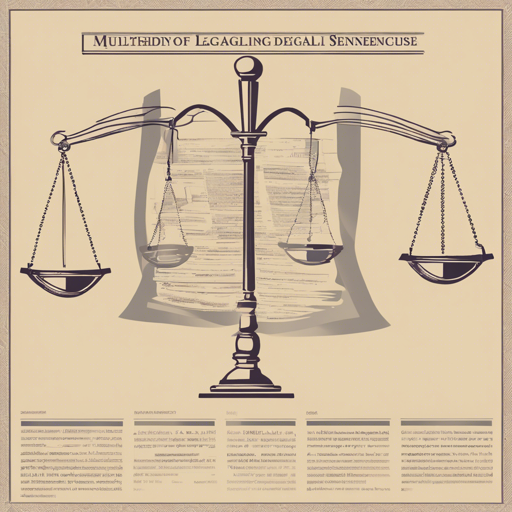In the world of Natural Language Processing (NLP), one of the pressing challenges we face is Sentence Boundary Detection (SBD). This technique is crucial for enhancing the reliability and effectiveness of various NLP tasks. In this article, we delve into the recent advancements in multilingual legal sentence boundary detection, particularly through the MultiLegalSBD dataset, which has been tailored specifically for the complexities of the legal domain.
Understanding Sentence Boundary Detection
At its core, Sentence Boundary Detection is like having a reader who can precisely identify where thoughts or declarations end and new ones begin. Think about how a good storyteller knows precisely when to pause, ensuring that the audience catches the full meaning of each point. However, in legal texts, where sentences can chain lengthy clauses and complex punctuation, this task becomes significantly more complicated.
What is MultiLegalSBD?
MultiLegalSBD is a multilingual legal dataset containing over 130,000 annotated sentences across six languages. Developed by Brugger, Sturmer, and Niklaus, this dataset aims to address the challenges that existing SBD models face when dealing with multilingual legal texts. The published research, detailed in the proceedings of the Nineteenth International Conference on Artificial Intelligence and Law, showcases the need for specialized datasets and models to improve NLP outcomes in the legal field.
Experimental Insights
The creators of MultiLegalSBD conducted a series of experiments using various models, including Conditional Random Fields (CRF), BiLSTM-CRF, and transformers. The findings revealed that existing SBD models do not perform well on multilingual legal data, leading to significant implications for tasks like document annotation and legal analysis.
Training and Testing Models
The researchers successfully trained and tested both monolingual and multilingual models, achieving state-of-the-art performance. Notably, they found that multilingual models outperformed baseline models in a zero-shot setting when tested on a Portuguese test set. This demonstrates a significant advancement in handling legal texts across different languages.
How to Utilize MultiLegalSBD
- Visit the official dataset page to download the MultiLegalSBD dataset.
- Familiarize yourself with the format and structure of the data.
- Train your models using the provided code, which supports various architectures for SBD.
- Evaluate your models based on the metrics laid out in the published research.
Troubleshooting Your SBD Implementation
While working with the MultiLegalSBD dataset, you may encounter some challenges. Here are a few troubleshooting tips to assist you:
- Issue: Low Performance of Models – Ensure that your model architecture is appropriate for the complexity of legal texts. Consider experimenting with different hyperparameters.
- Issue: Data Format Errors – Double-check the format of the dataset and make sure the data is preprocessed correctly.
- Issue: Multilingual Model Training Failure – Check your training data’s balance across languages; consider augmenting data for less-represented languages.
For more insights, updates, or to collaborate on AI development projects, stay connected with fxis.ai.
Conclusion
The creation of the MultiLegalSBD dataset marks an essential step towards enhancing the accuracy of Sentence Boundary Detection in legal documents across multiple languages. At fxis.ai, we believe that such advancements are crucial for the future of AI, as they enable more comprehensive and effective solutions. Our team is continually exploring new methodologies to push the envelope in artificial intelligence, ensuring that our clients benefit from the latest technological innovations.

